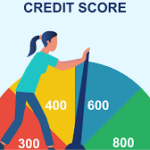The recent surge in the patient satisfaction metric as a yardstick for measuring success in the patient-centered healthcare system is being embraced by forward-looking organizations. These organizations have found that advanced home health software implementation saves operations and transforms the patient experience.
The Connection Between Technology and Care Quality
A link between technology and care quality is more appropriate for saving time in place of paperwork. Modern home health software eradicates duplication of documentation processes and allows clinicians to focus on meaningful interaction instead of wedging themselves behind administrative burdens.
These electronically enabled solutions give the patient an all-around picture with care approaches meeting individual needs. An actual feeling of being seen and understood transforms a patient’s perspective about the quality of care and several health outcomes.
Real-Time Communication Enhances Trust
Communication gaps are among traditional home health settings’ most common patient complaints. Although patients often form bonds with their care team on medical visits, there are other times when they feel disconnected, leading to frustration.
Home health care software helps with this through secure messaging options and a family portal. These tools allow patients to remain active without attending, which means they can ‘send’ concerns and queries or request updates. This builds trust in the long run and encourages greater active involvement in the patients’ journey on the receiving end.
Consistency Creates Confidence
Patients quickly become frustrated when different care providers offer contradictory information or seem unfamiliar with their history. Comprehensive home health software ensures every team member has immediate access to the same detailed patient record, including medication lists, care plans, progress notes, and previous visit summaries.
This unified approach ensures consistency across all interactions, regardless of which clinician visits on a given day. Patients no longer need to repeatedly explain their situation—a significant relief for those managing complex health challenges.
Efficiency Translates to Responsiveness
When scheduling and coordination happen seamlessly in the background, agencies can respond more quickly to changing patient needs. Sophisticated home health software optimizes caregiver schedules while balancing workloads, ensuring patients receive timely care when circumstances change.
This agility is particularly valuable during transitions, whether a patient is returning home from a hospital stay or adjusting to a new medication regimen. Quick response capabilities demonstrate to patients that their needs remain the priority, strengthening confidence in their care team.
Documentation at the Point of Care
Digital documentation tools allow clinicians to complete records during visits rather than hours later. This real-time approach improves accuracy while creating opportunities for immediate patient education.
Modern home health software often includes visual aids and educational resources that clinicians can share during appointments. These teaching moments help patients better understand their conditions and treatment plans, leading to improved compliance and, ultimately, better outcomes.
Conclusion
The most effective home health software solutions recognize that technology should never replace human connection—it should enhance it. These platforms create space for meaningful engagement between patients and their care providers by automating routine tasks and simplifying complex processes.
Agencies that leverage comprehensive digital solutions aren’t just optimizing their operations—they’re fundamentally improving how patients experience care. In an industry where satisfaction directly impacts outcomes, the right technology becomes not just a business tool but a clinical asset that benefits everyone involved in the healing journey.






